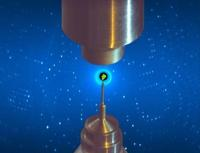Speaker
Description
The SANS method is often used to study various types of biological systems. However, in the common case, SANS gives only a limited view on the structure of biomacromolecular complexes in solution. In this case, SANS can be used in conjunction with other methods, such as molecular modelling and molecular dynamics. Molecular modelling methods are also commonly used to study biomacromolecular systems in solution. The combination of these two complementary methods in some cases allows you to get a fully atomic idea of the structure of the biomacromolecular complex in solution.
The use of SANS and molecular dynamics methods requires a direct comparison of SANS data and molecular dynamics data. In this case, the correct accounting of the solvent contribution remains an important factor. We used the method we developed for calculating SANS[1] and NSE curves along MD trajectories. We used this method for a number of multicomponent biological systems, such as complexes RecA :: ssDNA, RecA :: RecX :: ssDNA[2], various RNP complexes from influenza A virus[3] and glycoprotein complexes such as Glucoamilase from Asp. Awamori. In some cases, the use of this combined approach makes it possible even to find new complexes in solution or shed light on some interesting effects with observable via SANS data parameters.
[1] Shvetsov A.V. et.al. doi:10.1134/S1027451013060372
[2] Shvetsov A.V. et.al. doi:10.1016/j.febslet.2014.01.053
[3] Shvetsov A.V. et.al. doi:10.1080/07391102.2020.1776636

